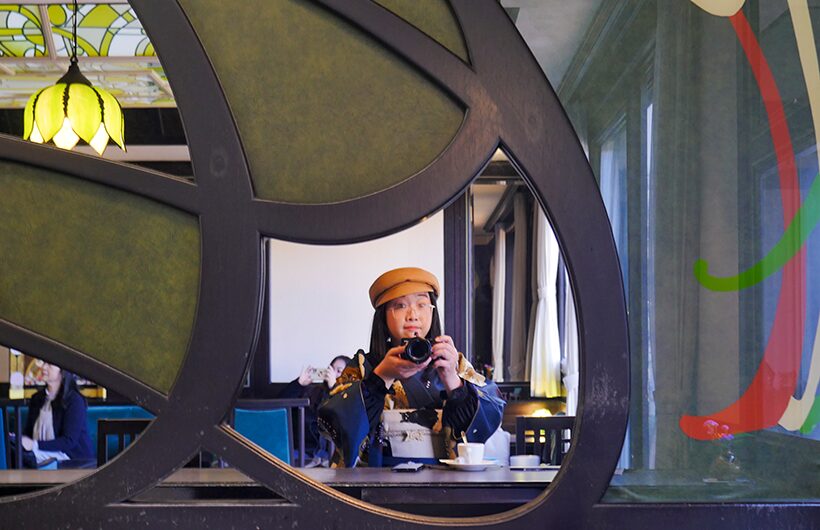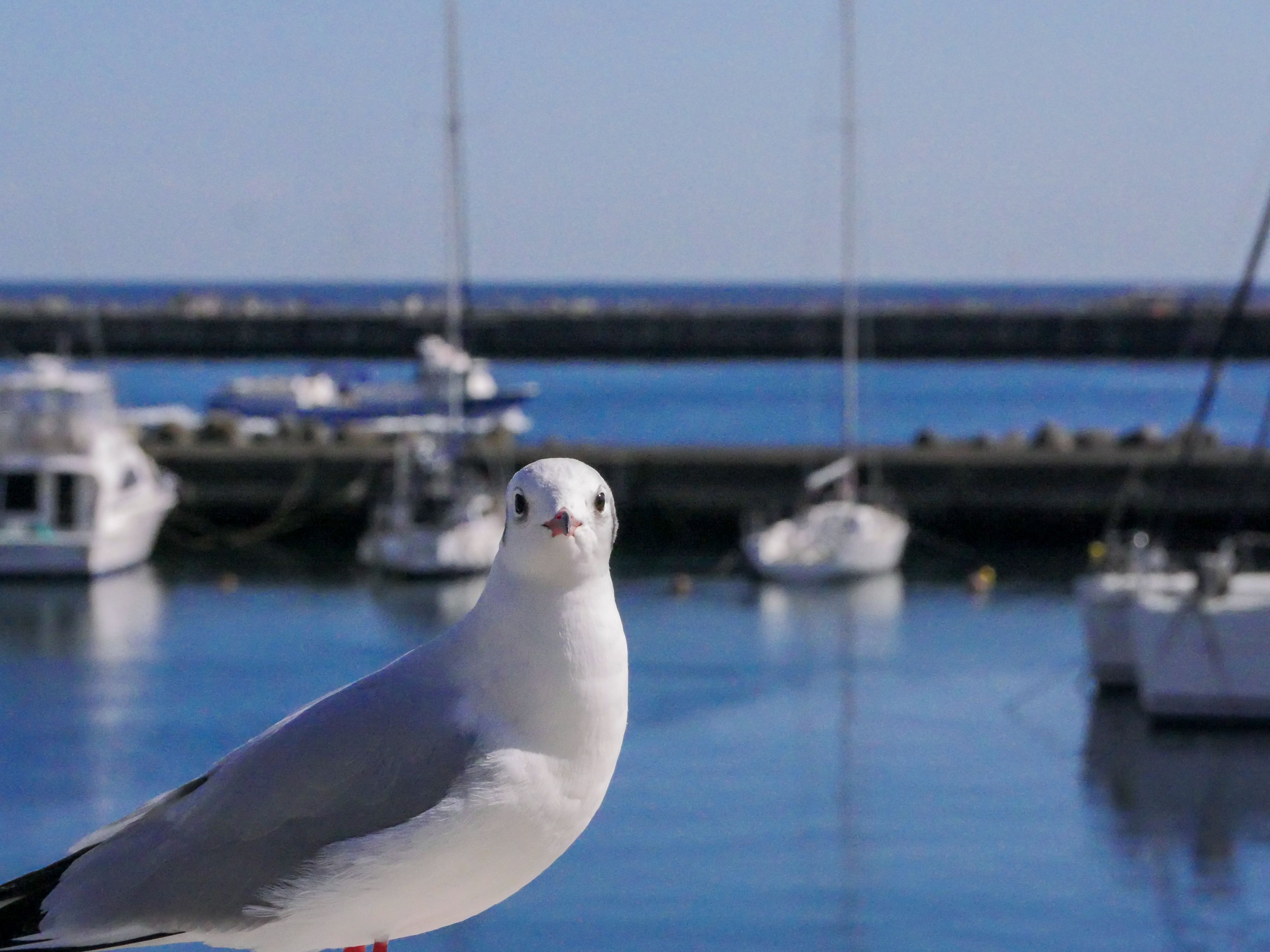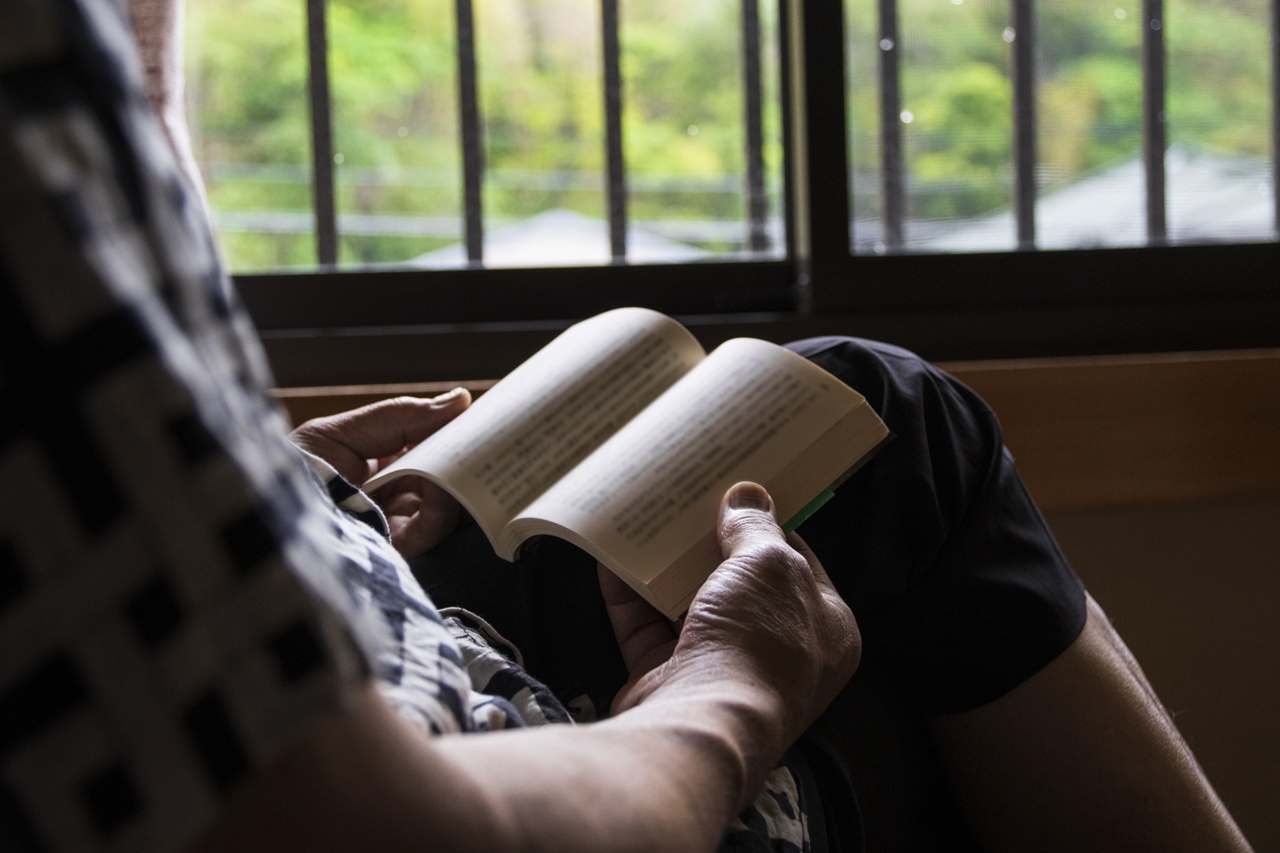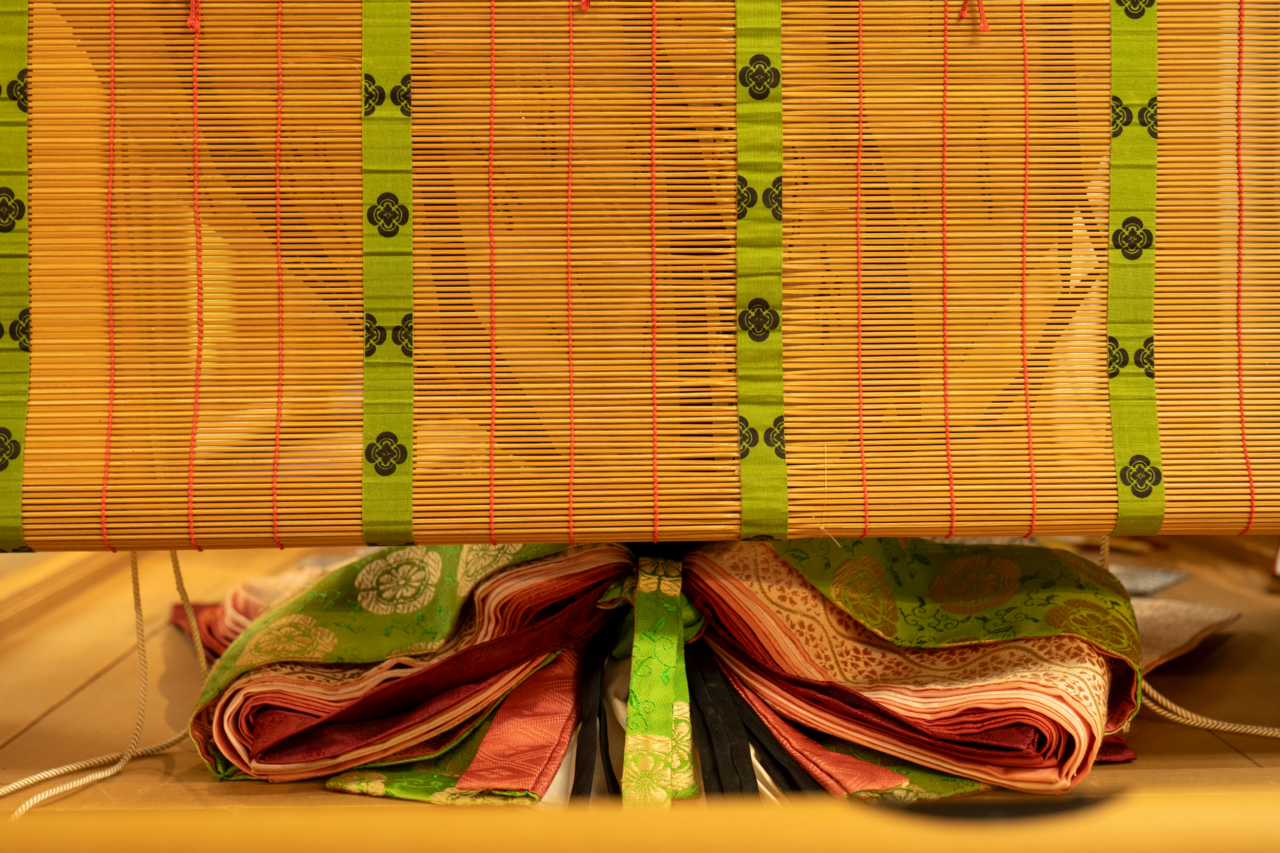
澄
如果你需要中文版,可以在這裡找到,歡迎點擊閱讀。
I used to work at a yukata rental shop in Taiwan for a while. Every month, we served anywhere from a few hundred to over a thousand customers. From that experience, I noticed some body type differences between Taiwanese and Japanese people. Whenever we had customers with a fuller figure, I would remind them to pay attention to sizing when trying on kimono in Japan, and suggest looking for shops that offer plus-size kimono options.
This article is based on the advice I used to give customers, combined with content from a kimono workshop I once held, along with my own personal experiences. The tips shared here are not only useful for trying on kimono, but can also serve as a basic reference for those thinking about buying one.
Although Taiwanese people generally have smaller builds compared to those from Western countries, the information in this article is still useful. After all, both Taiwanese and Westerners tend to be taller and larger in size compared to most Japanese people. The kimono rental shops recommended at the end of the article are especially suitable for taller or bigger travelers, offering larger sizes that make the experience more comfortable and enjoyable.
What Does “Plus Size” Mean for Kimono?
Kimono often gives the impression that it can fit anyone, no matter their size. While it’s true that kimono is more flexible than regular clothing, it’s not completely one-size-fits-all—it just has a wider size range. For example, with Western clothing, an L size usually can’t fit both S and XL body types unless the cut is very loose. But with kimono, an L size can often fit people from S to XL.
That said, this only works well if the professional staff helping you dress is skilled. Without proper technique, putting it on can feel awkward, and the final look might not sit right. To look and feel good in a kimono, it’s still best not to choose one that’s too far off your size. If you’re unsure, it’s better to go slightly bigger rather than smaller—extra fabric can be adjusted, but fabric that’s too short can’t be fixed. Of course, a well-fitting kimono is always the most comfortable and elegant option.
The concept of “plus size” in kimono is a bit different from what we usually mean by “plus size” in Taiwan or Western countries. Normally, we think of plus-size clothing as larger sizes that are less commonly purchased. But in the context of kimono, anyone who falls outside the standard size range—whether due to a broader body frame or simply being taller—is considered to need a plus-size kimono.
For women, if your hip measurement is over 105 cm or your height is over 168 cm, wearing a plus-size kimono will generally give a better and more comfortable fit. You can still wear a standard ready-made kimono—often labeled as “F” size—but it will really depend on the skill and experience of the professional staff helping you dress.
Kimono sizing is also a bit different from regular clothing. In addition to common labels like S, M, and L, there are special size codes based on height and width. For example:
- TL is for taller people,
- BL is for those who need more width,
- LL, LM, and WL cover both height and width adjustments.
For yukata (summer kimono), sizes are often labeled with numbers plus an “L”, such as 6L.

Kimono Length and Your Height: Why They Should Match
The shinchō (身丈) is the center back seam that runs down the back of a kimono, and it determines the overall length of the garment. Ideally, your kimono’s length should match your height, with a margin of about ±3–5 cm. For example, if you’re 165 cm tall, the minimum suitable shinchō would be around 160 cm. If you wear a kimono shorter than that, you’ll have to compromise—either by shortening the skirt length or by reducing the ohashori (the folded section at the waist), both of which affect the overall appearance.

The reason why the shinchō (身丈, kimono length) should match your height is because of the presence of the ohashori (お端折 or おはしょり)-the fold at the waist. If the kimono isn’t long enough to reach the floor, it’s difficult to create this fold properly. The ohashori helps adjust the skirt length, which is why kimono can fit a wider range of heights compared to regular clothing. For example, someone between 160 and 165 cm tall can still achieve the same skirt appearance thanks to this fold.
To create the ohashori (お端折 / おはしょり), a fabric tie called a koshihimo (腰紐) is used to control the fold. The position of the koshihimo changes depending on the shinchō (身丈, kimono length).
For example, in the photos below, I’m 165 cm tall. On the left, the kimono is slightly shorter than 160 cm, so the koshihimo had to be tied low, around the hip bone. As a result, you can see the tie when the ohashori is lifted. On the right, the kimono is 165 cm long, which is a perfect match for my height. The koshihimo is tied higher-between the hip and the waist-so it’s completely hidden under the fold.
Later, an obi (帯, kimono sash) is tied around the waist, which presses down the koshihimo, keeping it secure and out of sight. This also prevents the tie from being accidentally pulled loose, which could cause the skirt part of the kimono to fall out of place.

Ideally, the hem of the kimono should cover the tabi (足袋, traditional kimono socks). If the kimono is too short, it should at least not be higher than the top edge of the tabi. Exposing part of the lower leg can look awkward and is generally not considered elegant. The images below show the difference between a properly covered look and one where the tabi are not fully hidden.

Key Points for a Kimono Experience
If you notice that the kimono seems too short or that part of your lower legs might be exposed, let the staff know right away. As long as you’re still in the shop, the length can usually be adjusted unless the kimono has already reached its limit. Most kimono rental shops categorize their kimono by height, so try to avoid choosing one meant for someone shorter than you. With extra fabric, adjustments can always be made-but if the fabric is too short, not even an expert can fix it.
For taller travelers, it’s best to avoid wearing antique kimono or older styles when booking a kimono experience. This is because Japanese women in earlier eras were generally shorter than they are today. I’ve seen kimono from the Showa era that were less than 150 cm in length, which is simply not wearable for most foreign body types. Even experienced kitsuke-shi (着付師, kimono dressing professionals) or staff would have a hard time making it work.
Lower Body Coverage: Avoiding Exposed Linings When Walking
Generally speaking, the hips are the widest part of the lower body, so this section mainly refers to hip measurements. The lower half of a kimono is made by overlapping two front panels of fabric. If the overlap isn’t wide enough, larger movements like walking or kneeling can cause the inner lining to show, which isn’t considered proper.
In the example below, the overlap was too narrow-the edge of the right panel only reached about one-third across the right thigh. As a result, when kneeling, the inner layer became visible.

Ideally, the edge of the right front panel should reach all the way across to the left thigh. This ensures that even when crossing your legs or lifting the front of the kimono slightly, the white inner lining won’t show. In the photo below, you can clearly see that the right panel fully covers the left thigh. Even when kneeling, nothing inappropriate is exposed.

When buying ready-made or secondhand kimono, the fit is not custom-made, so the lower body may not be fully covered as ideally as described earlier. In these cases, it’s difficult to expect perfect overlap. A more realistic standard is that the right panel at least covers the right thigh, reaching somewhere near the center between the legs. This is generally acceptable, as long as you’re not attending formal events like tea ceremonies or official gatherings.
For daily wear, just being mindful is enough. Even for kimono rental experiences, this level of fit is still considered appropriate. Just avoid making large movements when taking photos, or simply adjust the hem slightly to keep everything in place.

If you’re planning to buy a kimono, you can use the shop’s size information to estimate whether it will fit. A common way to calculate the hip measurement is:Front panel width ( 前幅 ) + [Back panel width ( 後幅 ) × 2] + 13 cm = Hip size. You can allow a margin of ±5 cm from the result as a flexible range.

If the formula above feels confusing, don’t worry—I’ll show an example below using actual size information from a shop. By plugging in the numbers provided, you can estimate whether a kimono will fit your body. Personally, I use sizing as the first step to narrow down my choices, but whether I decide to buy or not still depends on the detailed measurements listed by the shop.
For instance, I once bought a kimono that claimed to fit up to a 120 cm hip size. However, when it arrived, the edge of the fabric only reached the center between my legs-far from my preferred coverage of reaching across to the left thigh. That’s why I suggest not just relying on the shop’s description of what “fits.” Instead, look at the actual numbers. What the shop thinks “fits” and what you consider a proper fit can be very different.

Key Points for a Kimono Experience
If you have a fuller lower body, it’s best to avoid antique kimono or vintage styles. These older kimono simply don’t have enough fabric in the front and back panels to fully wrap around the body. People in the past, especially in Japan, were much slimmer and shorter, so the fabric used in the lower half was minimal.
Trying to force a fit can be uncomfortable, might not look good in photos, and could even damage the garment. Since the seams in antique kimono are often fragile due to age, pulling too hard just a few times can cause them to tear completely. I had one kimono that literally fell apart at the seams during cleaning-and to this day, I still don’t know how to fix it.
At the same time, there’s no need to stress about achieving perfect coverage. For a kimono rental experience, aiming for a fully wrapped lower body is often too difficult. As long as the fabric reaches across to the left thigh-or at least to the center between the legs-it’s generally considered acceptable.
If you notice that the hem doesn’t stay in place and the inner lining tends to show while walking, try this simple trick: use your right hand to gently press down on the overlapping point where the left panel sits on your right thigh. This helps keep the fabric in place and reduces the chance of the inner layer being exposed.
Sleeve Length Matters: Tips for Longer Arms
The standard yukitake (裄丈, sleeve length) for a kimono should cover the wrist bone. Unlike regular clothing, where sleeve length is measured from the upper arm to the wrist, kimono sleeve length is measured from the spine, across the shoulder, and down to the wrist bone. When measuring, the arm should be held at a 45-degree angle away from the body for accuracy.

As mentioned earlier, there are noticeable body type differences between Taiwanese and Japanese people, and the same applies to arm length. On average, Japanese people tend to have slightly shorter arms than Taiwanese. As a result, the standard yukitake ( 裄丈, sleeve length measured from the center of the back to the wrist) on ready-made kimono often appears a bit short on Taiwanese wearers, with the sleeves ending about 3 cm above the wrist bone.
For Westerners, especially those from countries where people tend to have longer arms, this issue can be even more pronounced. However, if you’re just wearing the kimono for casual activities—like taking photos or strolling around—this slight shortness in sleeve length usually isn’t a big concern. But if you’re planning to attend a formal event, such as a tea ceremony or a traditional performance, it’s better to choose a kimono with a proper yukitake that fully covers the wrist bone for a more polished and appropriate look.
One thing to be aware of: if you have a fuller bust, you may need to pull extra fabric from the yuki ( 裄, the section between the shoulder and sleeve) to properly cover the chest area when wrapping the kimono. This adjustment pulls fabric away from the sleeves, making them end up shorter than expected-sometimes no longer reaching the wrist. I’ve personally experienced this, and it can be quite frustrating.
常見的二手和服最大問題之一,就裄丈不夠長,像是下圖左邊那套是算是二手和服中偏大件的,但我穿起來就是很露出一大截手腕,而另一邊的是 BL 號的成衣和服,裄丈就稍微長一點可以蓋住的手腕就比較多。

One of the most common issues with secondhand kimono is that the yukitake (裄丈, sleeve length) is often too short. For example, in the photo on the left, I’m wearing a relatively larger secondhand kimono, but you can see that a significant portion of my wrist is still exposed. On the right, I’m wearing a ready-made kimono in size BL, which has a slightly longer yukitake, so it covers more of my wrist.Personally, I prefer having the sleeves cover my wrists-it just feels more elegant to me. But of course, this comes down to personal preference.

Key Points for a Kimono Experience
In a kimono rental setting, slightly short sleeves (yukitake) can sometimes be managed through posing. For example, pulling your arms in slightly during photos can make the sleeves appear more balanced and natural. However, if you naturally have long arms, this issue is much harder to fix.
Unlike skirt length, which can be adjusted with the obi (belt), sleeve length is determined by the original width of the kimono fabric and cannot be lengthened. If sleeve fit is important to you, it’s a good idea to ask the shop during the fitting if they have any kimono with longer yukitake. That said, such options are very limited, since the fabric width is fixed and not easily altered in most cases.
Recommended Kimono Rental Shops for Plus-Size Travelers
As a general rule, if you usually wear XL-size clothing and want to try a kimono experience, I recommend choosing a rental shop that mainly serves international tourists. Foreign visitors tend to have larger body frames compared to Japanese customers, so these shops are more likely to invest in plus-size kimono. After all, larger-size kimono can cost three to four times more than standard ready-made ones, so not many shops are willing to stock them.
Although I haven’t used kimono rental services myself since learning how to dress in kimono, I used to get requests from customers at my previous job asking for shop recommendations—especially ones that offer larger sizes. So I did some research, and for those with fuller body types, the following two shops are worth considering:
夢館

This is one of the three most popular kimono rental shops among Taiwanese tourists. The main reason I recommend them is because they offer a wide range of kimono sizes suitable for fuller body types. Their size options are not only extensive but also well-stocked. Although I’ve only accompanied friends for the rental experience myself, many of the plus-size kimono I own were purchased from the same supplier they work with some of the pieces I have, they also carry.
In fact, their available sizes are the largest I’ve found so far not just in name, but in actual measurements. They also have the most variety in designs and patterns, which are original and made with quality fabrics. Basically, if this shop doesn’t have what you need, custom-made might be your next best option. They’re definitely on the go-to list within the kimono enthusiast community for anyone needing larger sizes.
Another plus: they have a multilingual website and a Facebook page in Chinese, making it easier to ask questions. When I went with a friend, there were also Chinese-speaking staff at the shop, so communication was smooth and stress-free. To be honest, even though they only have one physical location, they put a lot of effort and investment into online marketing—on par with major chain stores. Many shops stop improving once they start making money, but this one continues to grow, and that kind of attitude leaves a very strong impression.
Wargo

Another shop worth considering is Wargo. I once contacted them on behalf of a customer with measurements of 170 cm in height and 125 cm in hip circumference. They recommended their standard plan, saying it includes more options for plus-size kimono. Since they serve many Western tourists—who generally have broader builds than most Japanese customers—their sizing tends to be more inclusive.
If you have a fuller figure, I strongly recommend avoiding their antique kimono plan. Older kimono were made for much smaller body frames, as Japanese people in the past were generally shorter and slimmer. Unless you’re very petite, it’s best to skip this option. For all other plans, be sure to check the actual garment measurements—some kimono styles rarely come in extended sizes, so don’t rely solely on general size labels.
Wargo also has an English-language website, which makes browsing and booking easier for international visitors. I’m not sure whether they provide English-speaking customer support, but having access to an English site is already a big help. As someone who has built websites myself, I understand the cost and effort of creating multilingual content, so I always appreciate shops that take that extra step.
Another thing I really like about Wargo is their high-quality accessories. They’re connected to several accessory-focused companies, offering a wide selection of items—from hairpins to decorative pieces. The quality is excellent, and while the retail prices are quite high, many of these items can be rented for free or for a small fee as part of the kimono experience. Once you compare the rental fee to the purchase price, it feels like a great deal.
I first learned about Wargo when I saw an event organizer carrying one of their umbrellas. It was so beautifully designed that it left a deep impression on me. I even considered buying one, but after seeing the price-13,000 yen-I had to pause for a moment!

另一個推薦的原因是,他們不只在京都有多個店面,在日本各地也有分店,對於想和服體驗的人來講彈性比較大,不用為了體驗遷就自己的行程,這點也是我推薦給客人的原因之一。
Final Thoughts
These kimono sizing tips are meant to help you find a rental shop that better suits your needs. When the fit is right, not only will the photos turn out better, but you’ll also feel more comfortable and be able to move more freely throughout the day. I’ll continue updating this guide as I discover more shops that offer a wider range of sizes for different body types.
*Unless otherwise noted, all photos in this article were taken by the author (yanshoto.com) during personal travels and are fully copyrighted. Please do not reproduce or use them for commercial purposes without prior permission. Thank you for your understanding and respect.
✦ 喜歡這篇文章嗎?
《煙雲漫筆》的每月慢信會收錄這樣的片段,也會分享一些未公開的草稿與旅行筆記。
如果你也想一起閱讀,歡迎留下信箱。




